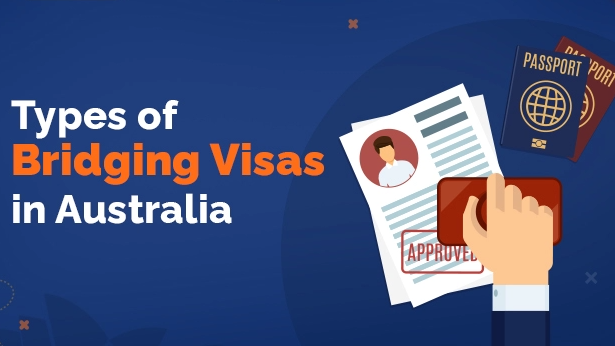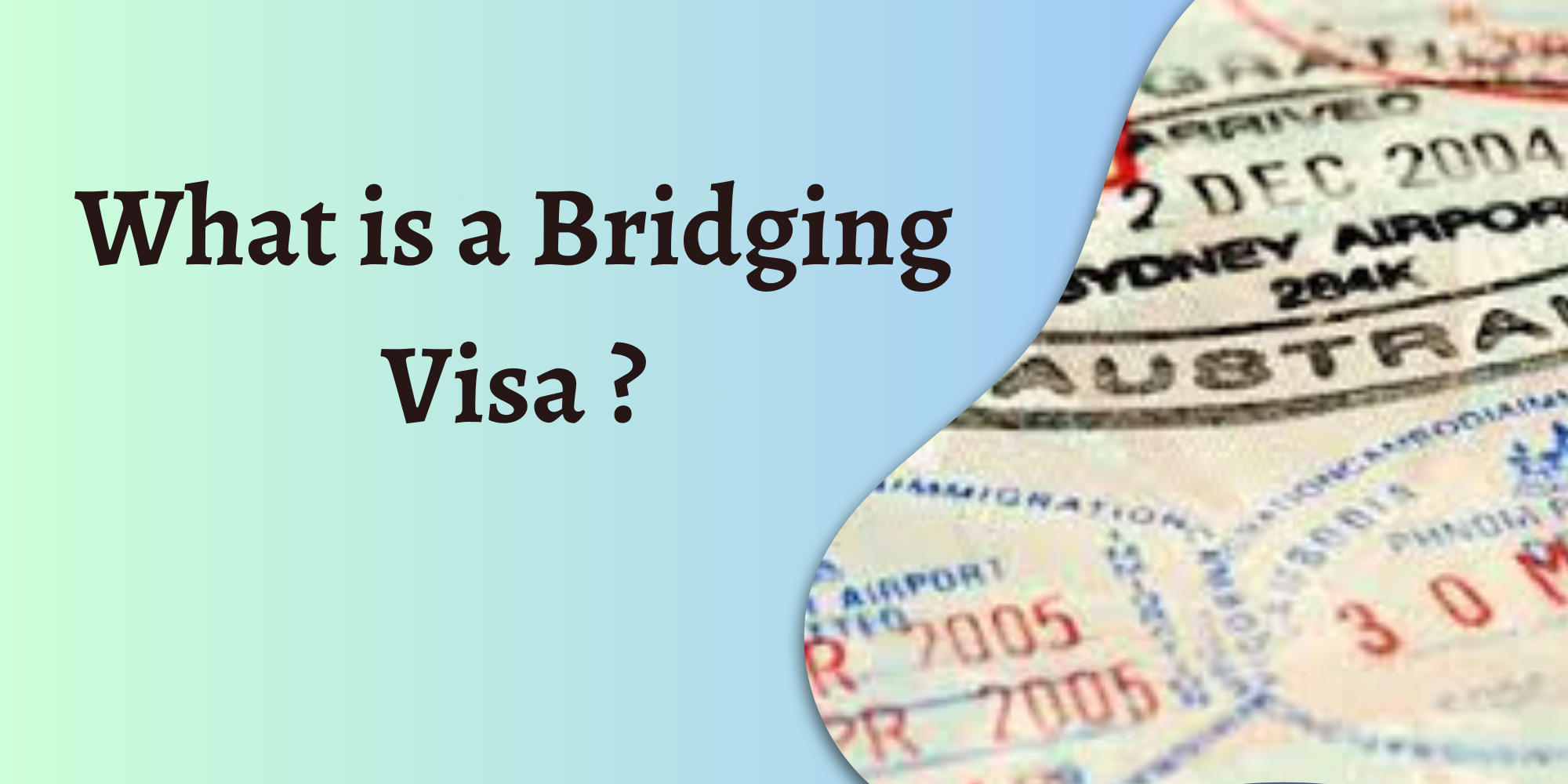What happens if you’re current visa is about to expire and you haven’t received a response regarding your new application? Even worse, what should you do if your current visa has already expired? Well, you can still stay legally by applying for a bridging visa.
A bridging visa is a temporary visa that allows you to stay legally in Australia. It gives you time to either apply for a new visa or make arrangements for your departure from Australia.
In this guide, you’ll learn more about the types of bridging visas, their eligibility requirements, conditions, and more.
What is a bridging visa in Australia?
A bridging visa is a special type of visa designed to ‘bridge’ the gap between the expiration of your current visa and the decision on your new visa application. It allows non-Australian citizens to remain in the country lawfully during this waiting period.
Generally, you can only apply for a bridging visa if you hold or previously held a substantive visa.
Substantive visas are types of visas that allow for long-term stays or permanent residency. This includes work, student, and family visas such as:
- Skilled Regional Visa – 887 visa
- Temporary Graduate Visa – 485 visa
- Sponsored Parent (Temporary) Visa – 870 visa
On the other hand, non-substantive visas are temporary and short-term, including bridging visas, enforcement visas, and criminal justice visas.
Who needs a bridging visa?
You will need a bridging visa if you are in one of these immigration situations:
You’re in Australia on a temporary visa, but it has expired, and you’re waiting for a decision on your new visa application.
Sample scenario: You’ve been studying in Australia on a student visa that has expired. You’ve applied for a skilled worker visa to continue your career in the country.
While waiting for the decision on your skilled worker visa application, you apply for a bridging visa. This maintains your legal status and allows you to pursue the job opportunity once your application is approved.
You’ve applied for a substantive visa, but it’s still being processed, and you need to stay in Australia briefly.
Sample scenario: You’ve submitted an application to extend your student visa so you can continue to study in Australia. However, the processing of your extension is taking longer than expected.
To ensure you can legally remain in Australia to finish your studies, you apply for a bridging visa. Then, you simply wait for the extension outcome.

Your substantive visa application has been denied, but you have appealed the decision and you need to stay in Australia while your appeal is being processed
Sample scenario: Your partner visa application has been denied. You have appealed the decision, and you need to stay with your family in Australia while the appeal is in process.
To remain in the country legally, you apply for a bridging visa during the appeal.
You have been granted a substantive visa, but you need to stay in Australia briefly before you can travel on that new visa.
Sample scenario: You hold a temporary work visa in Australia and have just been granted a skilled worker visa.
However, before the activation of your new skilled worker visa, there’s a brief waiting period, typically a few weeks to a couple of months. During this time, you need to stay in Australia to complete specific job assignments.
To be able to remain lawfully in Australia during this time, you apply for a bridging visa.
You have been granted a substantive visa, but you need to leave and return to Australia briefly before settling there permanently.
Sample scenario: You’ve been granted a parent visa to join your family in Australia permanently.
However, there is an urgent need for you to briefly return to your home country for personal reasons before you can settle in Australia permanently.
To ensure your ability to return and maintain your visa status during this short absence, you secure a bridging visa.
What are the different types of bridging visa
A bridging visa can help you maintain lawful status in Australia during these transitional periods, but they may come with limitations on certain activities. Below are the types of bridging visas in Australia.
| Bridging Visa A (BVA) | Bridging Visa A (Subclass 010) allows you to stay in Australia after your current substantive visa expires, and while your new visa is being processed. |
| Bridging Visa B (BVB) | The Bridging Visa B (Subclass 020) allows you to stay in Australia legally while your substantive visa is being processed. It also permits you to leave and return to Australia for a defined travel period (within 3 to 12 months) |
| Bridging Visa C (BVC) | The Bridging Visa C (Subclass 030) is typically granted to people who are in Australia unlawfully, and who are either currently making arrangements to depart the country or waiting for a decision on a substantive visa application. |
| Bridging Visa D (BVD) | The Bridging Visa D (Subclass 040 and 041) is a bridging visa that allows you to stay lawfully in Australia for a short period (typically 5 working days). This gives you time to either lodge an application for a substantive visa, arrange your departure from Australia, or apply for another bridging visa. |
| Bridging Visa E (BVE) | The Bridging Visa E is divided into two subclasses: Subclass 050 This visa lets you stay lawfully in Australia when you need more time to make arrangements for your departure, settle any immigration matters, or wait for a decision on your immigration status. Subclass 051 |
| Bridging Visa F (BVF) | The Bridging Visa F (subclass 060) is granted exclusively to suspected victims of human trafficking, slavery, and similar forms of abuse. |
| Bridging Visa R (BVR) | The Bridging Visa R (subclass 070) is granted to those in immigration detention who are facing pending removal from Australia by the Australian Government. It acts as a temporary release from detention when their removal from Australia is not currently possible. |

Bridging Visa A
If you’re in Australia on a major visa and you apply for another big visa, you’ll get a BVA. This BVA keeps you legal while they’re looking at your application.
Key points to remember about a BVA:
- This visa doesn’t give you any travel rights, so you can’t come back to Australia if you leave. But you can ask for a BVB to get travel rights (more on this below).
- If you go abroad on your current main visa after you’ve applied for another main visa, your BVA will end when you exit Australia. This means you’ll need to ask for your BVA to be given back when you return to Australia. If you don’t get your BVA back before your current visa runs out, you’ll be here .
- You won’t have work rights on a BVA unless you ask the Department for another BVA without work limits. To apply, you need to prove you’re in money trouble.
- But if an employer has picked or backed you for a real visa based on your skills, and you seem to meet the visa rules, you’ll get work rights right away.
- Also, if you’re asking for a partner visa (sc 820) while in Australia, you’ll get work rights while they process your visa.
Bridging visa B
To keep your BVA from being cancelled while you wait for your substantive visa application to be processed and you want to travel outside Australia, you need to apply for a BVB.
Key points to remember about a BVB:
- this visa remains valid for three months, so you need to return to Australia before the three-month period ends after it’s granted.
- Because of the three-month limit, you should apply for the BVB 2-3 weeks before you plan to travel.
- You’ll need to complete a basic form and submit it to the Department. They’ll process the visa in a few days and let you know if they’ve approved it.
- It’s possible to have both a BVA and a BVB at once.
Bridging Visa C
If you’re an illegal non-citizen and you submit a valid application for a substantive visa, you’ll get a BVC. This holds true if you’ve overstayed your visa and become illegal, but have then put in a valid application.
Key points to remember about a BVC:
- You have no travel rights, so if you exit Australia, you can’t come back on this visa. You can’t ask to travel on a BVB while you have this visa so you can’t leave Australia (if you need to travel , you should get in touch with your case officer).
- When you’ve asked for a substantive visa in Australia, you might have gotten a BVC – the Department will tell you if this happened. If so, you won’t need to fill out another form.
- When you apply for your substantive visa, you get an initial BVC. This BVC won’t let you work, except if you’ve applied for one of these SkillSelect visas:
- Business Talent visa (subclass 132)
- Business Innovation and Investment (Provisional) visa (subclass 188)
- Business Innovation and Investment (Permanent) visa (subclass 888)
- Employer Nomination Scheme visa (subclass 186)
- Regional Sponsored Migration Scheme visa (subclass 187)
- Skilled – Independent visa (subclass 189)
- Skilled – Nominated visa (subclass 190)
- Skilled – Regional (Provisional) visa (subclass 489).
- If your BVC doesn’t allow you to work in Australia, you can ask for another BVC that does. To get a BVC that permits work, you’ll need to show you’re struggling .
Bridging Visa D
When your main visa runs out, a BVD gives you the chance to stay in Australia for a short period. This allows you to apply for a new main visa, plan your departure from Australia, or get a Bridging visa E.
Key points to remember about a BVD:
- Your BVD ends five working days after it was given to you or five days after your substantive visa ended or if you get a BVE within those 5 days.
- You need to use these five days to submit a valid application or make plans to exit Australia.
- This visa doesn’t allow you to come back to Australia, so you can’t travel on it.
- Under no conditions does this visa let you work. If you do work, we might cancel your BVD.
Bridging Visa E
When your main visa runs out, this visa lets you stay in Australia while you get ready to leave, wrap up your immigration stuff, or wait for an immigration decision.
Key points to remember about a BVE:
- Once you exit Australia, this visa expires preventing your return unless you obtain another substantive visa
- Your grant letter specifies if you have permission to work. Working without authorization can result in the Department canceling your BVE and detaining you. You might also face removal from Australia.
What is a Substantive Visa?
A substantive visa in Australia gives you the right to live and work in the country for a long time. These visas differ from temporary ones because they last longer often with the goal of permanent residency.
Australia offers several types of substantive visas such as:
- Permanent Residency Visas: These visas give you the right to live and work in Australia without a time limit. The government often grants them to skilled migrants, family members of Australian citizens or permanent residents, and people who have made a big impact on the country.
- Temporary Visas with Path to Permanent Residency: Some temporary visas offer a way to get permanent residency. This means you can apply for a permanent visa after you meet certain conditions. These include visas for skilled migrants, business owners, and investors.
The exact rules and qualifications for substantive visas change based on the type of visa and your own situation. You should look into the different options and talk to an immigration expert to figure out which visa fits your plans best.
Frequently Asked Questions
Is Bridging Visa a temporary visa?
Yes, bridging visas are temporary visas. Their main purpose is to allow you to stay in Australia for a limited period, giving you time to either apply for a substantive visa, arrange your departure from Australia, or wait for a decision on another visa application.
Can I apply for another visa while on Bridging Visa A?
Yes, you can apply for another visa while on a Bridging Visa A (BVA). However, there are a few things you need to keep in mind.
- You can only apply for a substantive visa, not another bridging visa.
- You must meet all of the eligibility requirements for the visa you are applying for.
- You must apply for the visa before your current BVA expires.
What is the difference between Bridging Visas A and C?
The main difference between Bridging Visas A and C lies in the applicant’s current immigration status in Australia.
A BVA is granted to people who are already in Australia on a substantive visa and have applied for another substantive visa before their current visa expires.
On the other hand, A BVC is for people who are in Australia unlawfully and who are making arrangements to depart from Australia, or who are waiting for a decision on a substantive visa application.
Enjoy a smoother bridging visa application with the support of a registered agent.
Save yourself the stress of handling the numerous requirements for a bridging visa application…
At KBA Global, we’ve helped countless people achieve their dreams of studying, working, and living in Australia. We keep up with all the latest immigration changes to make sure your bridging visa application is complete and on time.
Make your stay in Australia lawful and enjoyable! Book a call and let us know how we can help you.
| Disclaimer: The above information is a general guide and not professional immigration advice. Be aware that immigration laws and regulations can change swiftly, potentially rendering some or all of the information outdated. Thus, before using the information above, we recommend checking the current laws with assistance from a migration agent or the Department of Home Affairs website. |

